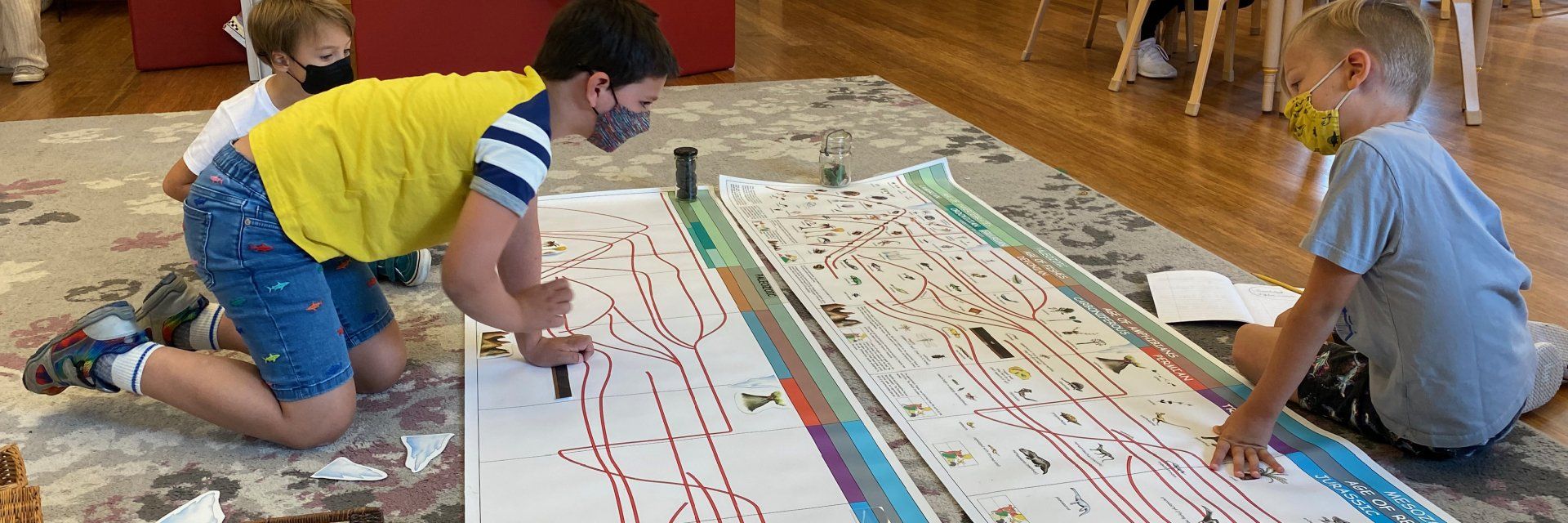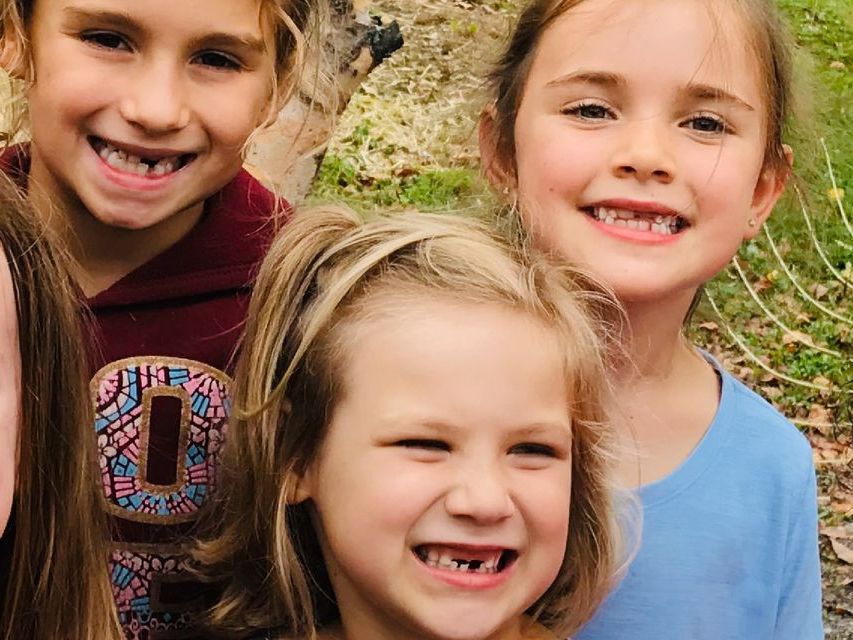Elementary History: A Scope and Sequence

Think back to your grade school days. What do you remember learning about history? Whatever you did learn was probably focused on your country’s history, didn’t take up very much of your total learning time, and may have even contained some “facts” that you began to question as you got older. For the majority of us, in-depth history instruction didn’t take place until perhaps high school, and even then, it wasn’t all that comprehensive.
As with all subjects, Montessori schools begin with the big picture and gradually focus on the details. That’s why when we teach history, we start at the very beginning. We give students an understanding of the start of the universe. Over the course of the year/years, we give progressively more detailed lessons that eventually zoom in to the various cultures that have existed on Earth throughout history. We find this approach helps give children a frame of reference in which everything makes just a bit more sense, and is a whole lot more interesting.
It all starts when the children enter the elementary around age six. History is one of the few areas of learning in the Montessori classroom in which students receive a larger group lesson, sometimes even the whole class at a time. This is because all of the children within the elementary community are developmentally prepared to engage with the information being presented. When they participate in these big, impressionistic lessons each year, they gain something new each time.
What do we teach and where do we start? We present an overview of what the Montessori history curriculum looks like for children age six through age twelve.
The Story of the Universe
Early in the school year — sometimes even the very first week — elementary Montessori guides present a fantastic lesson about the beginnings of our universe. It’s all very dramatic and presented in a story-telling format, although there are a number of ‘science experiments’ sprinkled throughout. From the Big Bang/Great Flaring Forth, to the formation of the first particles, the first elements, states of matter, density, and the sheer vastness of space, there is a LOT of information included. The whole thing ends with the unveiling of a model volcano into which vinegar is poured to cause an ‘eruption’, much to the delight of younger elementary children. This lesson ends with an explanation of Earth’s early geological history, and children leave the lesson excited and in awe.
The Concept of Time
At some point during the year, and likely toward the beginning, children learn a bit more about the mechanics of how humans observe the passing of time. They look at how the year is divided with the help of their fraction materials, they explore years by making their own timelines, and they learn to tell time on the clock. This section of study concludes by intersecting with grammar and learning the three fundamental tenses: past, present, and future.
The Long Black Strip
This lesson is literally so big it has to be done outdoors or in a *very* long hallway. While children stand to the sides, the guide carries out a large, rolled up strip of black cloth. The outer end is weighted down, and as the guide unrolls the cloth, they tell the story of Earth’s history: from the formation of our planet itself, to the earliest one-celled organisms, through the evolution of all living things, and so on. The strip is 30 meters long, and each centimeter is meant to represent a million years. By the time the very end is revealed, the children can see a tiny slice of red. This represents the amount of time humans have inhabited the earth. You can imagine what children are feeling when they walk away from such a powerful visual.
The Clock of Eras
As you can tell by now, we like to give children impressionistic lessons and visual aids that help them develop a frame of reference. The Clock of Eras imagines Earth’s history as if it were encompassed within a twelve hour clock. This circular, laminated material breaks down the major eras and allows children to see a visual percentage of the total history each section takes up. They are able to see the large chunk of time during which there was no, or nearly no life at all. This is followed by another imposingly long stretch of time during which Earth was host to just one-celled organisms. As life became more complex, the slices of the pie become smaller and smaller, until a minuscule strip of red again shows all of humanity.
The Timeline of Life
The Timeline of Life is exactly what it sounds like: a large and gorgeously illustrated timeline that shows how life has evolved from the beginning of the Paleozoic Era to today. Children are fascinated to learn about the seemingly strange earlier life forms, and how over time they changed and paved the way for others. It’s also neat to see how there are several organisms that have withstood the test of time and developed ways to adapt regardless of an ever-changing planet.
Fundamental Needs of Humans
What do people need to survive? Children learn about our basic needs, consider how humans meet those needs today, and explore how various cultures have met those needs throughout history.
The Study of Early Humans
We believe it is critical to teach children about where our ancestors came from. Having an understanding of human history allows us all to respect the enormous progress that has been made in countless ways since the existence of the first humans. We teach students how the earliest humans survived and met their needs, and how their eventual movement around the planet changed the course of history.
Stages in the Progress of Civilization
This area of study is of particular interest to upper elementary-aged children, and their newly-acquired research skills allow them to spend extensive amounts of time reading and discovering for themselves about how civilizations have functioned throughout history. Students dive deep into learning about ancient and more recent cultures and societies across the globe, discovering the many similarities and differences they have both to one another and to humans today.
Once children complete the elementary program, they have a solid understanding of basic history. This allows them to more deeply understand and appreciate whatever history courses they take in the future.










